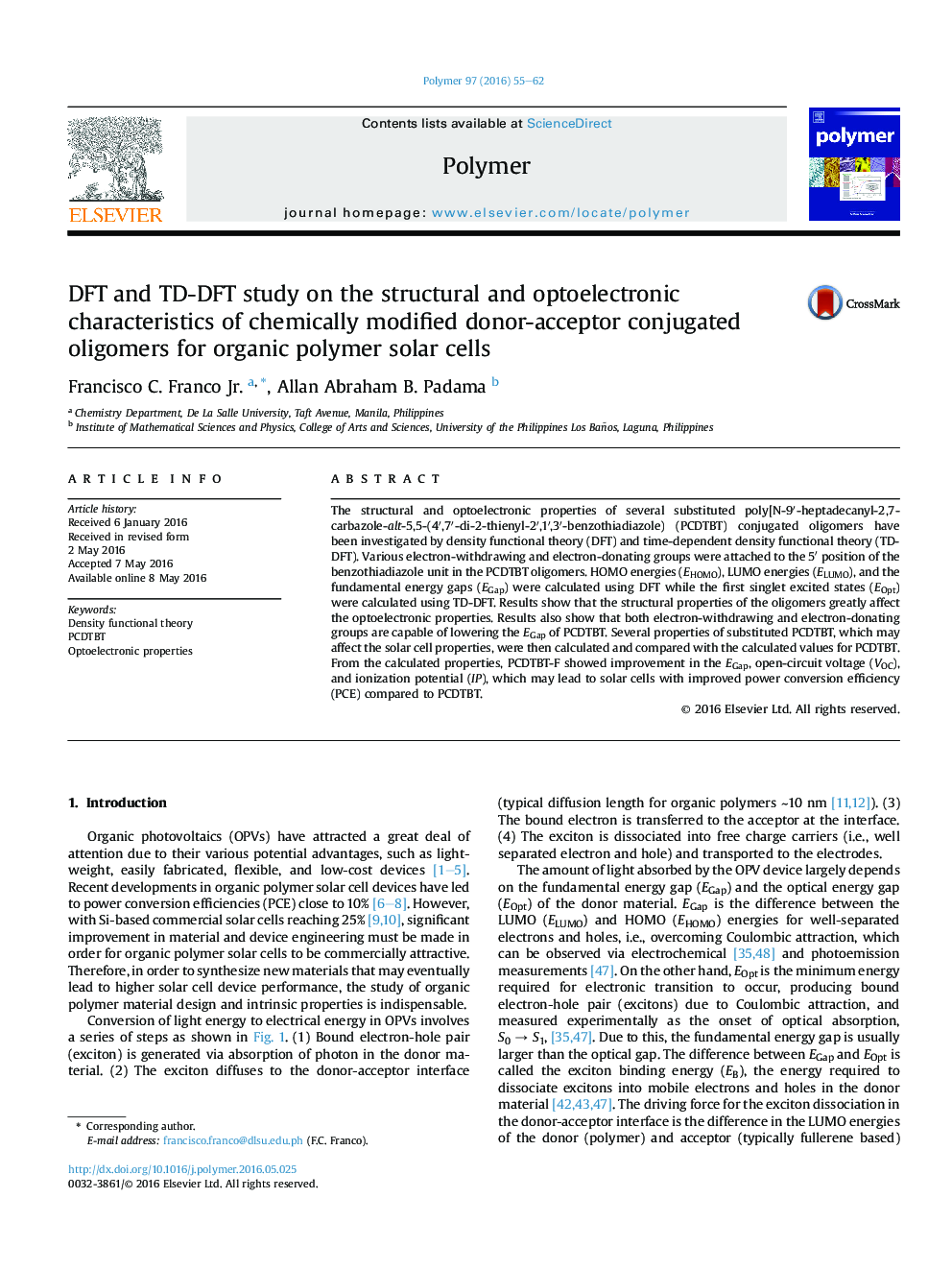| Article ID | Journal | Published Year | Pages | File Type |
|---|---|---|---|---|
| 5179220 | Polymer | 2016 | 8 Pages |
â¢Effect of chemical modifications on PCDTBT were studied by DFT and TD-DFT.â¢Large deviations in Φ and Îr in chemically modified PCDTBT greatly increases EGap and EOpt.â¢The EGap and EOpt of PCDTBT may be lowered by both electron-withdrawing and electron-donating substituents.â¢Coplanar thiophene and substituted benzothiadiazole units in PCDTBT derivatives may lead to increased light absorption.â¢PCDTBT-F may have superior solar cell properties: ISC, VOC, and IP, than PCDTBT.
The structural and optoelectronic properties of several substituted poly[N-9â²-heptadecanyl-2,7-carbazole-alt-5,5-(4â²,7â²-di-2-thienyl-2â²,1â²,3â²-benzothiadiazole) (PCDTBT) conjugated oligomers have been investigated by density functional theory (DFT) and time-dependent density functional theory (TD-DFT). Various electron-withdrawing and electron-donating groups were attached to the 5â² position of the benzothiadiazole unit in the PCDTBT oligomers. HOMO energies (EHOMO), LUMO energies (ELUMO), and the fundamental energy gaps (EGap) were calculated using DFT while the first singlet excited states (EOpt) were calculated using TD-DFT. Results show that the structural properties of the oligomers greatly affect the optoelectronic properties. Results also show that both electron-withdrawing and electron-donating groups are capable of lowering the EGap of PCDTBT. Several properties of substituted PCDTBT, which may affect the solar cell properties, were then calculated and compared with the calculated values for PCDTBT. From the calculated properties, PCDTBT-F showed improvement in the EGap, open-circuit voltage (VOC), and ionization potential (IP), which may lead to solar cells with improved power conversion efficiency (PCE) compared to PCDTBT.
Graphical abstractDownload high-res image (138KB)Download full-size image
